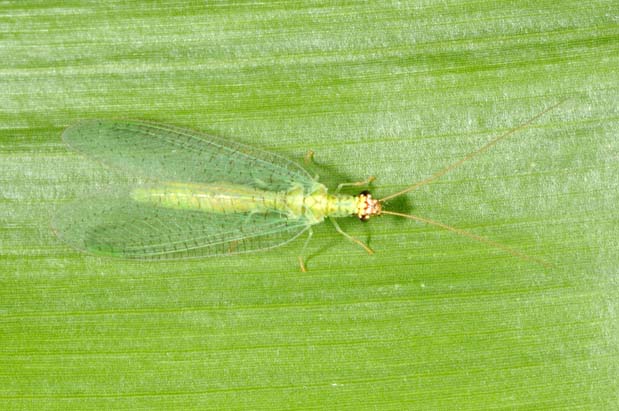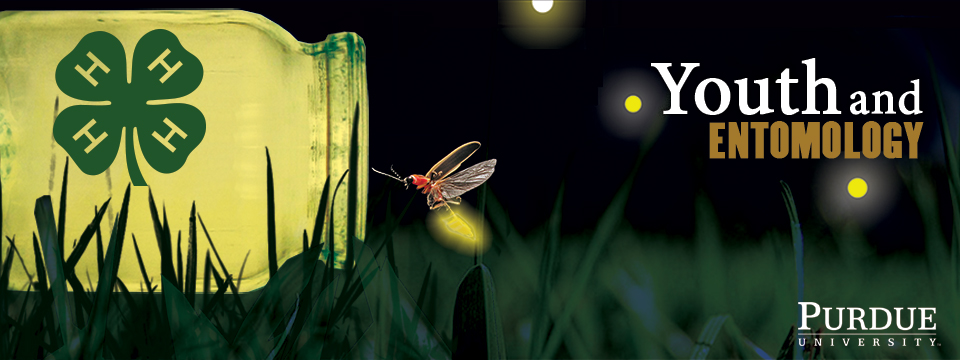

|
|
Green Lacewing adult
(John Obermeyer, Purdue University) |
|
Common Name: Green Lacewing - adult
See also: larva Scientific Name: Chrysopidae (green): and Hemerobiidae (brown): sp Status: beneficial predators Beneficial Stage: immature and some adult Biology: Lacewings belong to two separate families, but because their biology is very similar, they are often discussed together. Adult green lacewings are pale green, measure approximately 3/4 inch in length, and have a delicate body with long antennae and bright, golden eyes. They have large, transparent, pale-green wings with a characteristic network of heavy venation throughout. Brown lacewings are less common, slightly smaller in size, and have hairy, darker-colored wings. Overall, they are coppery brown in color. Both of these insects lay their eggs on plants. Brown lacewings lay their eggs directly on the undersides of plant leaves, while green lacewing eggs are suspended at the tops of threadlike stalks for protection from predators. Lacewing larvae are tiny upon emerging from the egg but can grow to 3/8 inch long. The larvae are slender and pointed at both ends. They have very characteristic, large, sucking jaws through which they draw out the body fluids of their prey. Value: Lacewings are predatory as larvae, and many are also predators as adults. They feed on aphids and small arthropods, such as mites, thrips, whiteflies, scales, and other soft-bodied prey and have been estimated to consume 600 to 1,000 aphids during their lifetimes. Lacewings are effective and beneficial predators in crops, gardens, and forests because they are relatively long-lived, have several generations per year, and have a high reproductive capacity. |
 |
||||||||||||||||
|
|
|||||||||||||||
|
Purdue Extension Entomology, 901 West State Street, West Lafayette, IN 47907 USA, (765) 494-4554 Department of Entomology | College of Agriculture | Extension © Purdue University | An equal access/equal opportunity university | Integrity Statement | Copyright Complaints | Maintained by ENTM IT Trouble with this page? Disability-related accessibility issue? Please contact us at entmwebmaster@purdue.edu so we can help. | ||||||||||||||||
